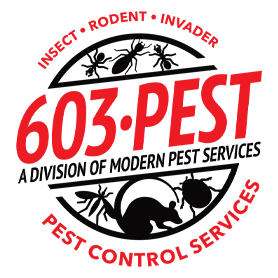Careful of the Stinger! Understanding the Difference Between Bees and Wasps
Bees and wasps can become a stinging danger when they nest too close to or in homes, commercial buildings or public spaces. A single sting can be life-threatening to individuals allergic to the venom. Likewise, multiple stings can be especially dangerous to young children, the elderly, or people with heart or breathing problems. To remove bees or wasps, the nest or hive must be moved or destroyed, which can be a dangerous endeavor and should only be handled by professionals.
But First, Know the Difference
Do not confuse yellow jackets, hornets and wasps with beneficial insects like honeybees and bumblebees, which are important pollinators and contribute to a healthy eco-system. Most bees are naturally nonaggressive and none of the males can sting while the females may only sting if the nest is threatened.
Yellow Jackets
This yellow and black wasp is about ½” long and can often be mistaken for a honeybee, but honeybees are covered with brownish hairs while yellow jackets are not. Many picnics have been ruined by these stinging insects, which are a common sight throughout New England and the frequent subject of bee removal requests. Yellowjackets typically nest in the ground but also nest in voids of man-made structures. Yellowjackets, especially the females, are extremely aggressive and will attack if their nest is being threatened. Yellowjacket stingers stay attached to their abdomens, making it possible for them to sting repeatedly, inflicting pain and injecting potent venom and many people have serious allergic reactions to their sting.
Paper Wasps
Paper wasps are similar to yellow jackets in color but have a slimmer, more elongated body shape. Their legs are long and hang down even during flight. Compared with yellow jackets, paper wasps are fairly unaggressive but will sting to defend their nests. You will find paper wasp nests in just about any protected location, such as inside mailboxes, cable TV and other utility boxes, under the covers of outdoor grills, in birdhouses or feeders and in light fixtures. Their nests are often the size of golf balls and consist of 20 or fewer cells and may hang horizontally or vertically.
Bald-Faced Hornets
Sometimes called white-faced hornets, bald-faced hornets are basically robust yellow jackets in black and white. They have heavy bodies and pale, yellow-white marks on the head and at the end of the abdomen. Hornets are actually beneficial, as they capture other insects to feed to their larvae. However, they are much more aggressive in defending their nest than the yellow jacket. The hive is a gray paper-like mass that gradually expands throughout the summer until it is about the size and shape of a football with an opening at the bottom. They are built above ground and can usually be found attached to the branches of a tree or shrub. Active nests may contain anywhere from 100-700 hornets!
Call the Professionals
If bees, wasps or other stinging insects are affecting your ability to enjoy your home and yard, reach out through our website for a quick quote, or call us directly at (603) 210-2773. We have the experience to quickly identify and safely treat stinging insects and their nesting sites. Contact 603 Pest Control Services, and let us worry about the pests.

